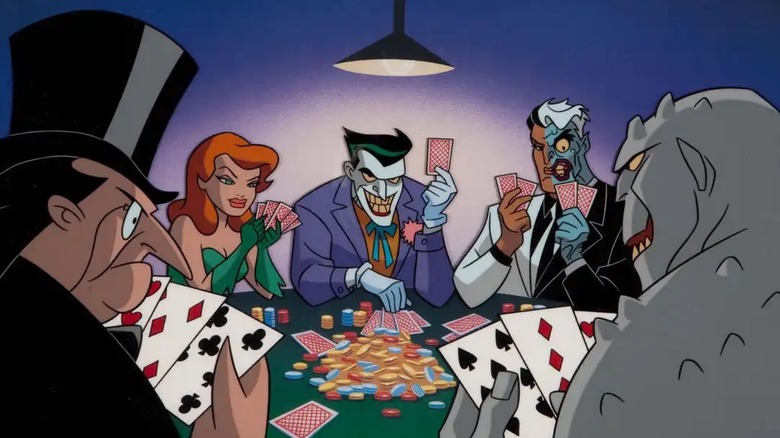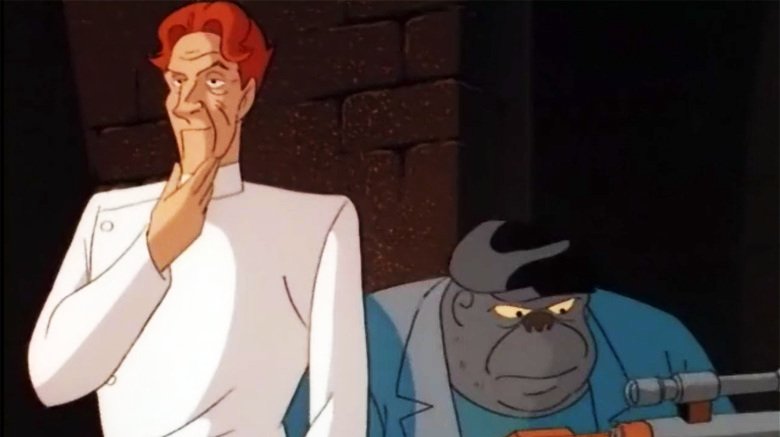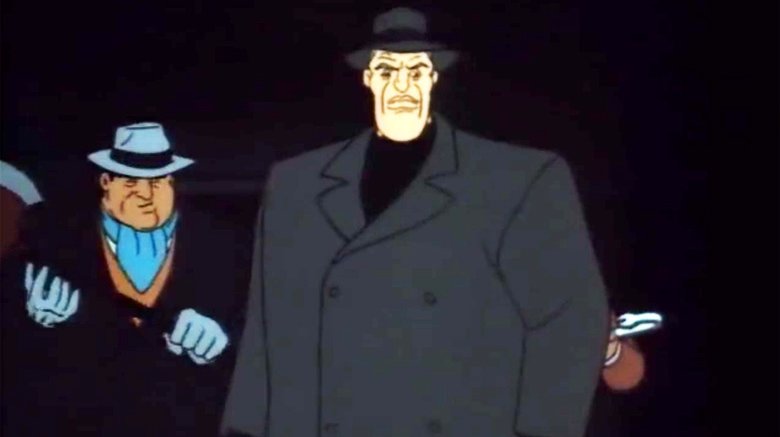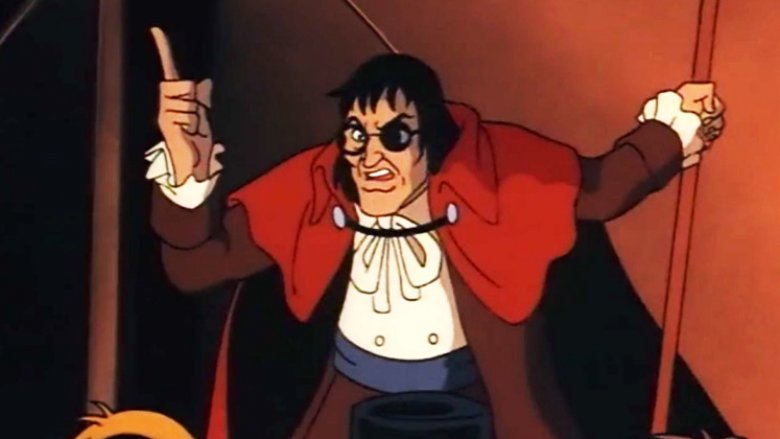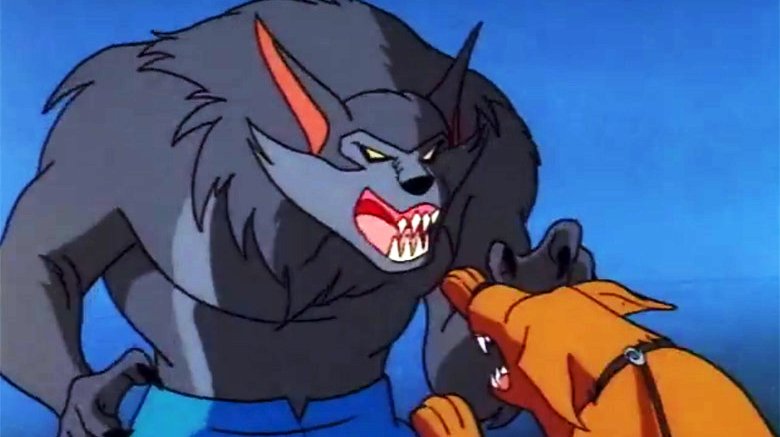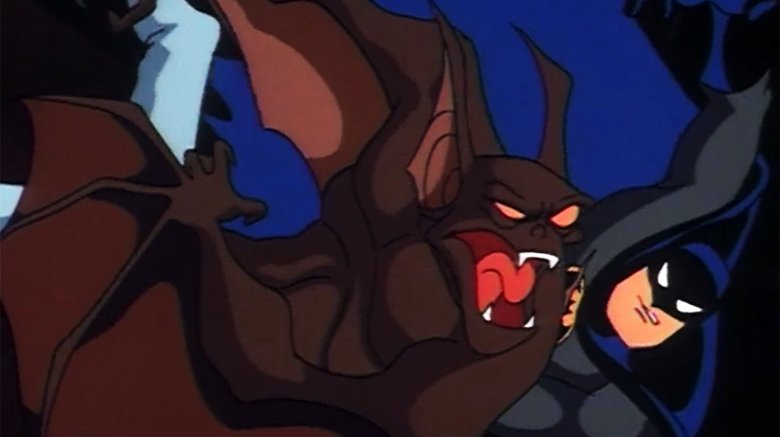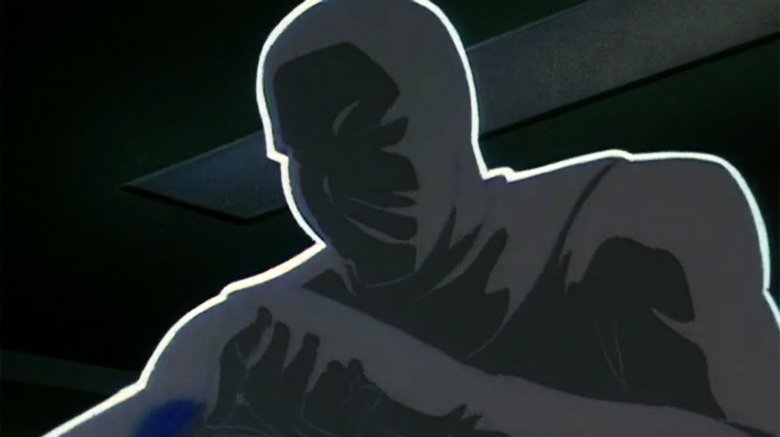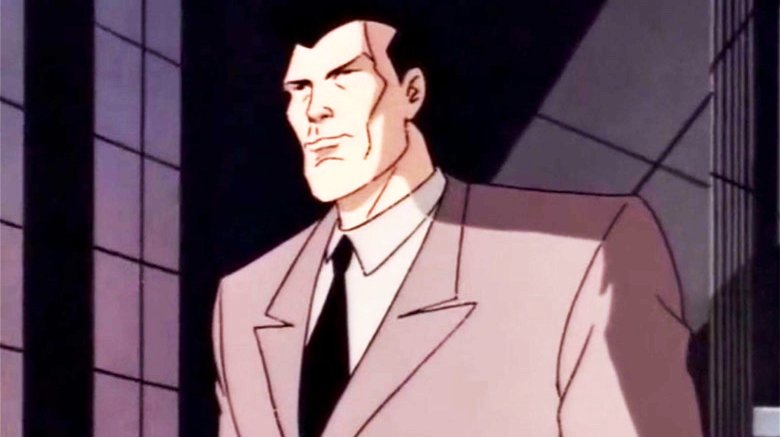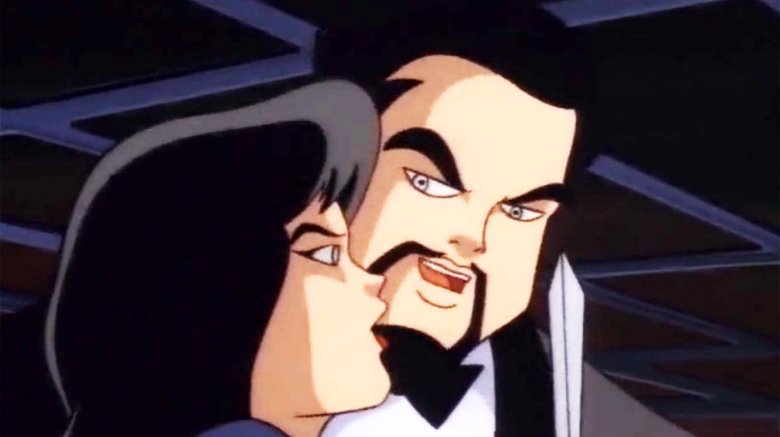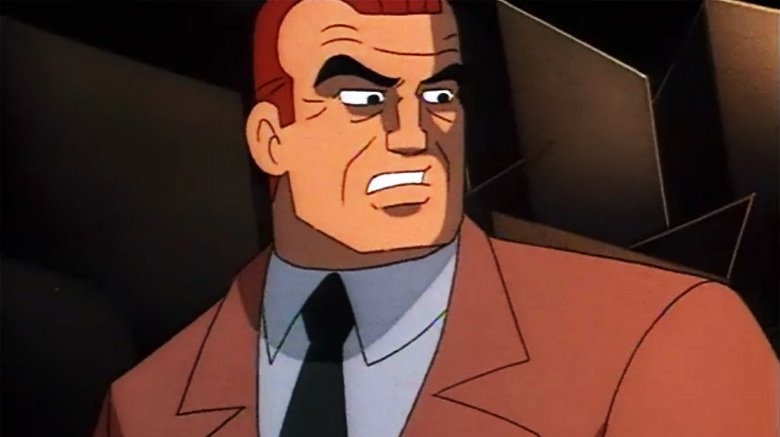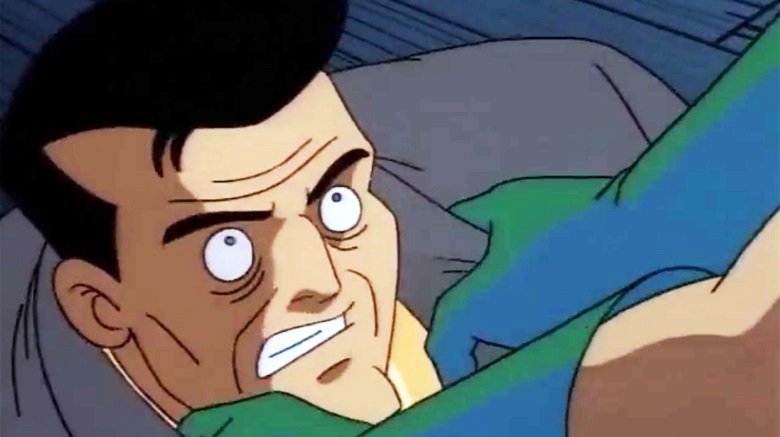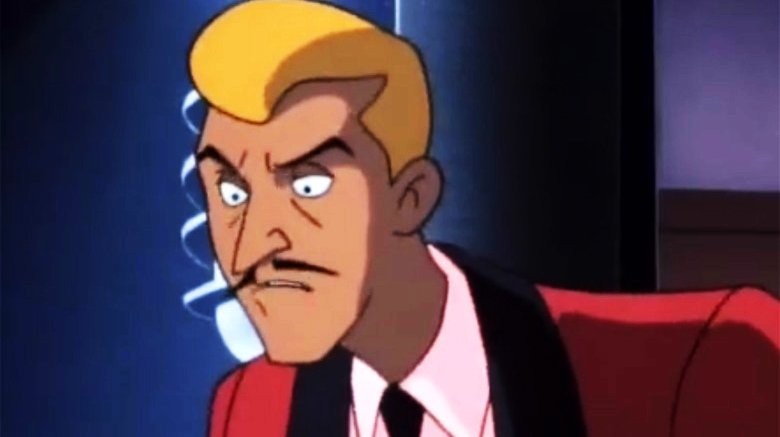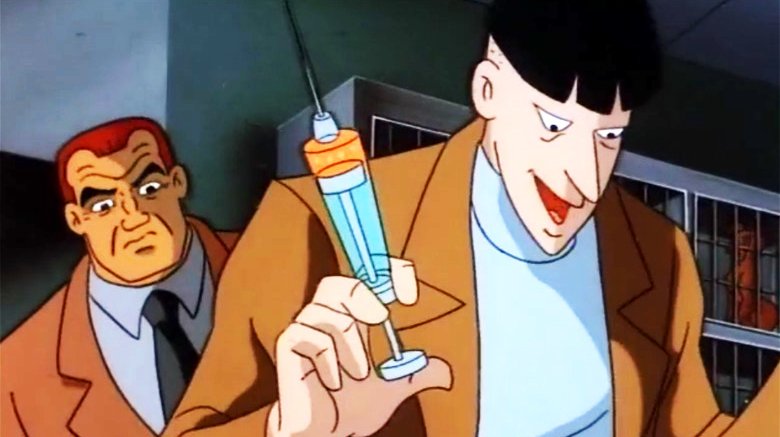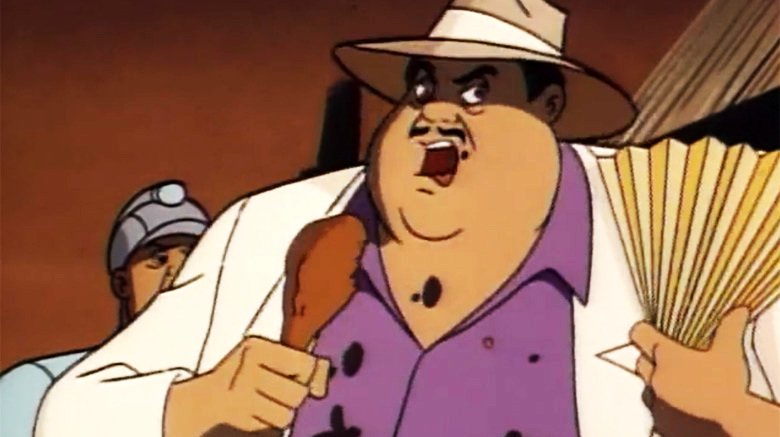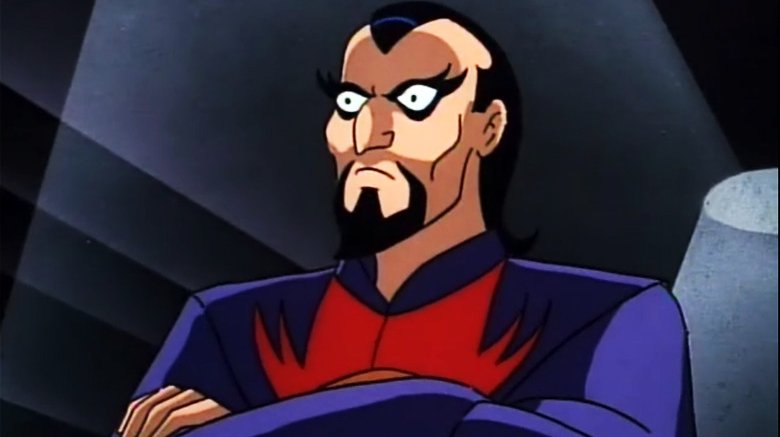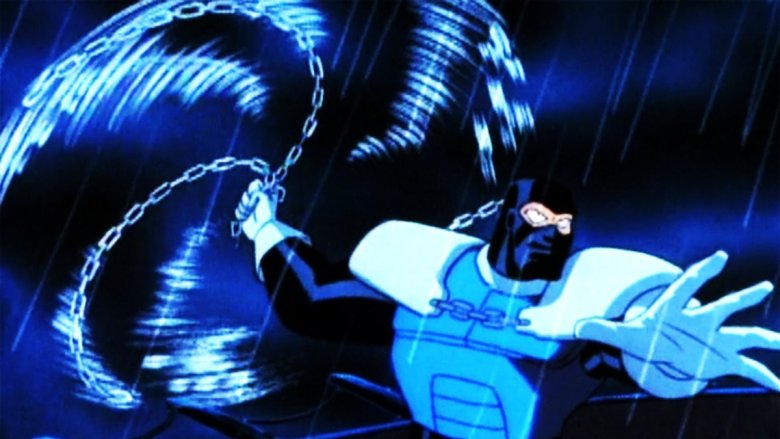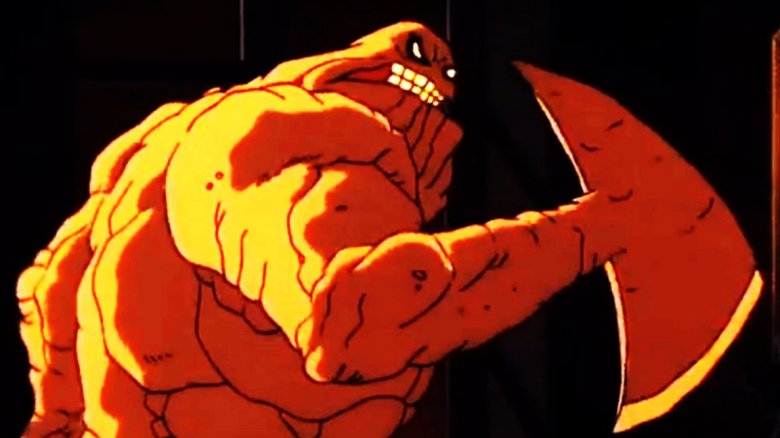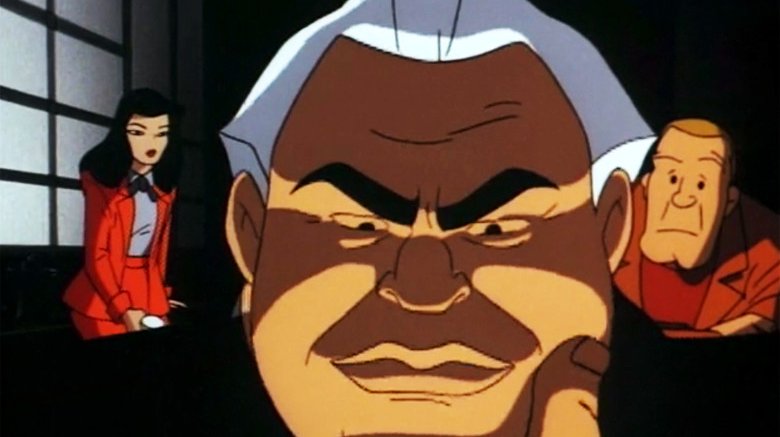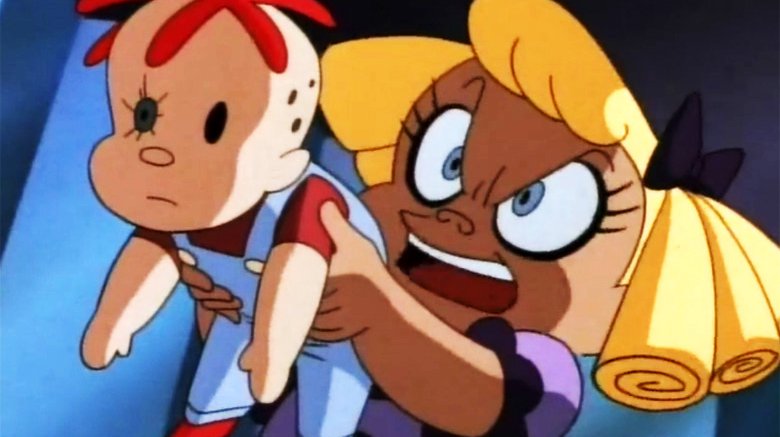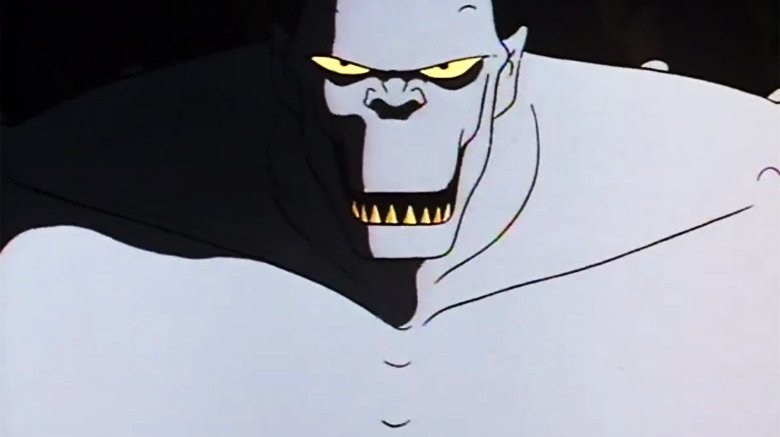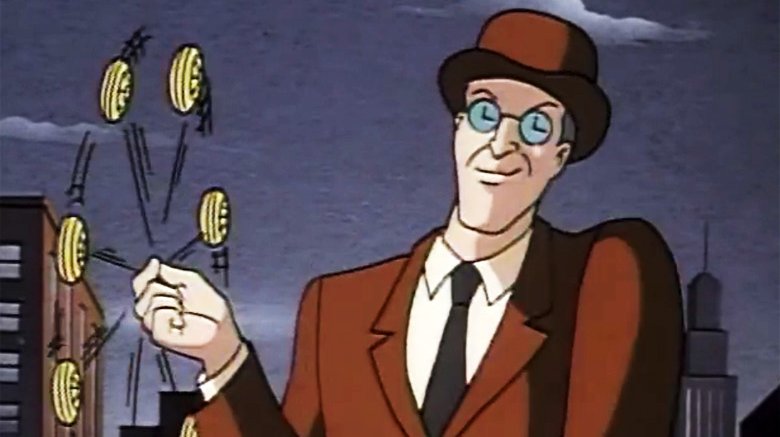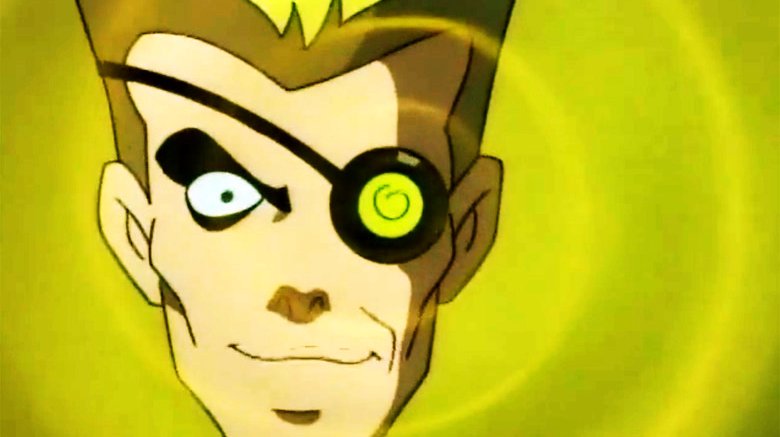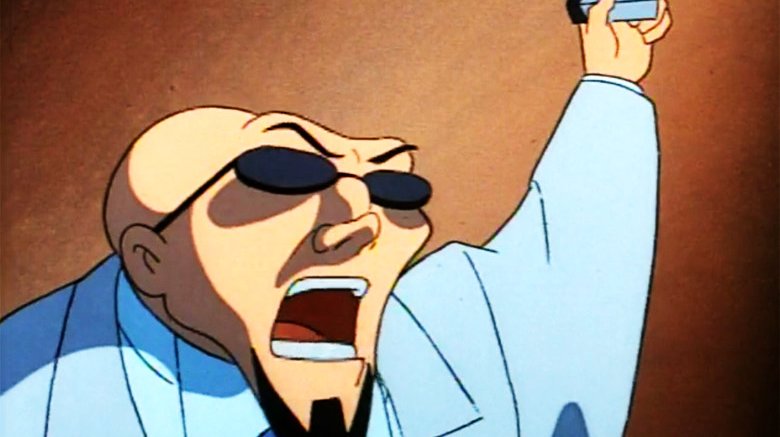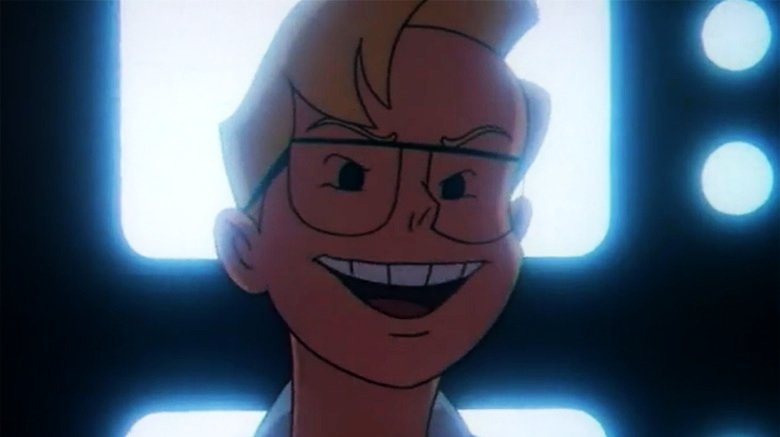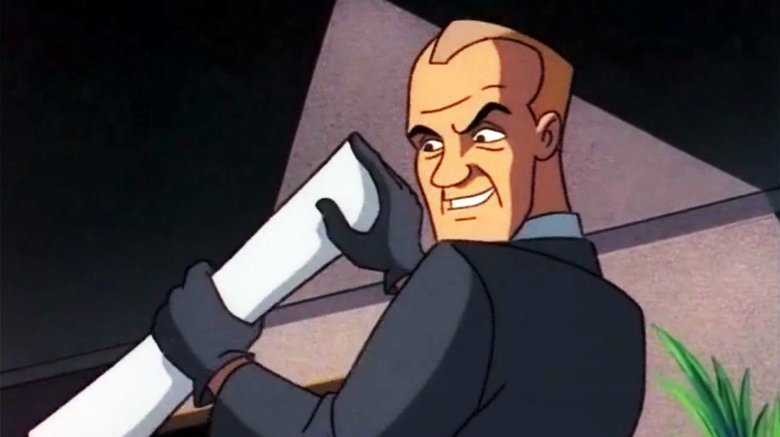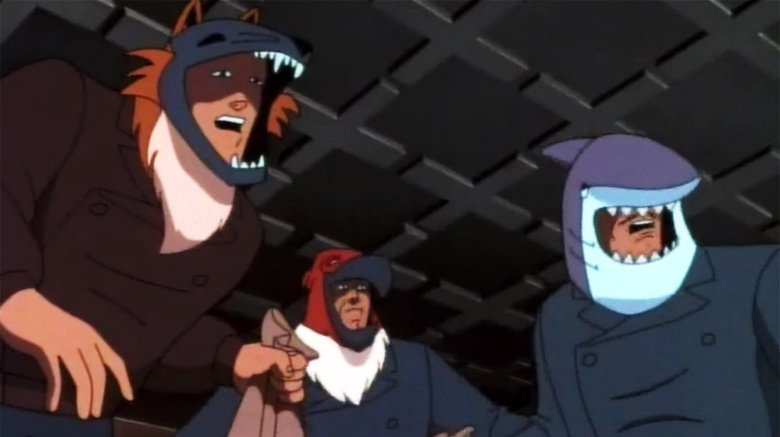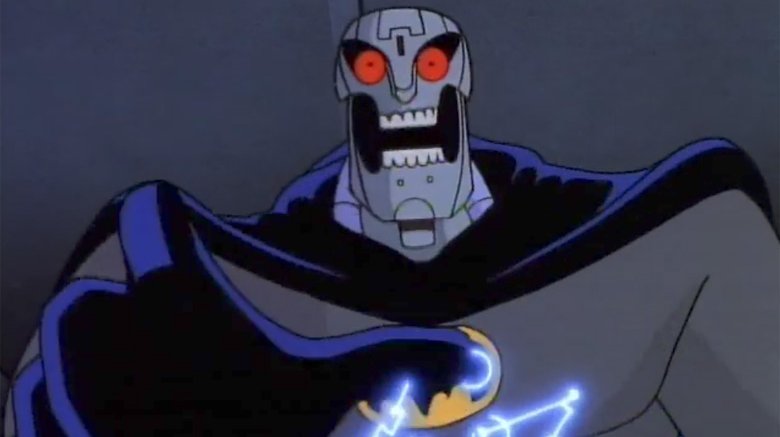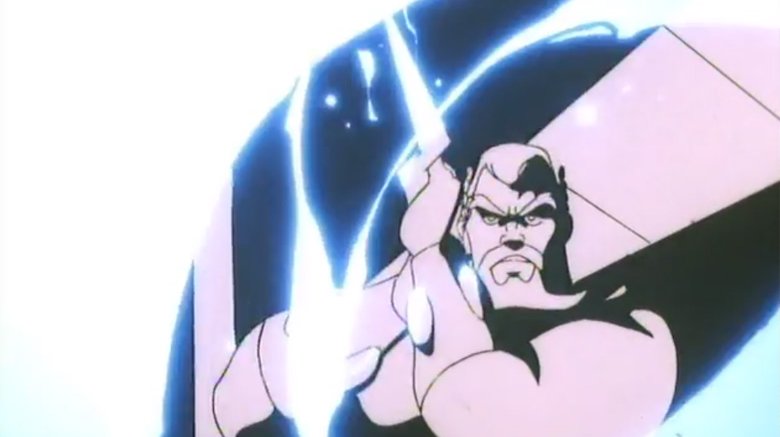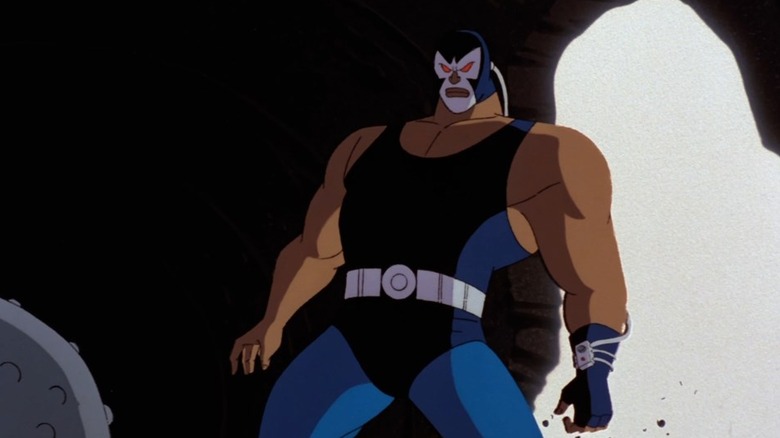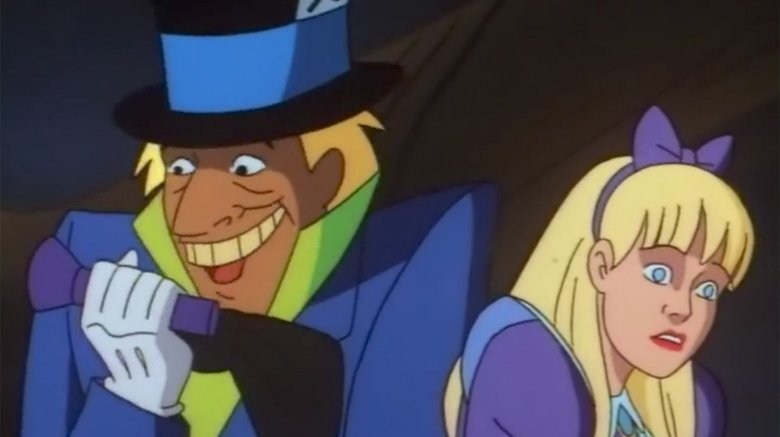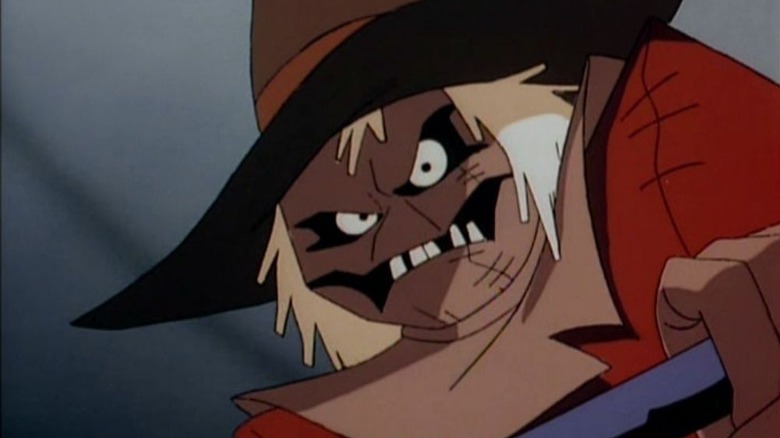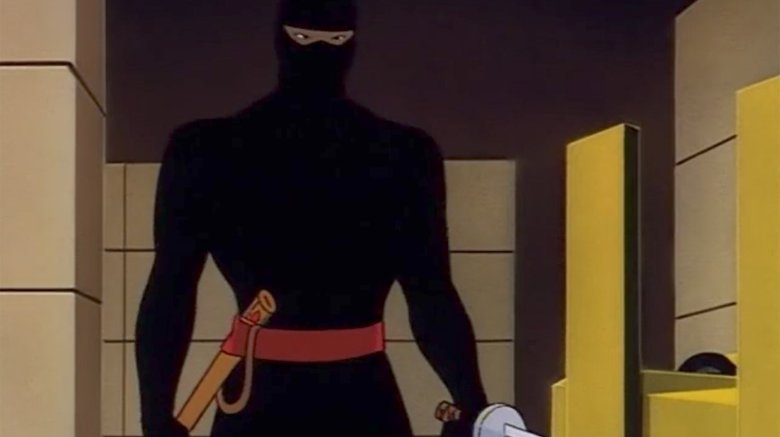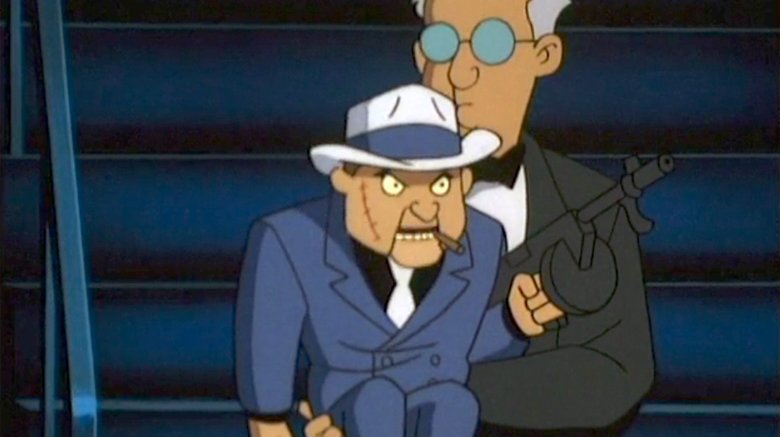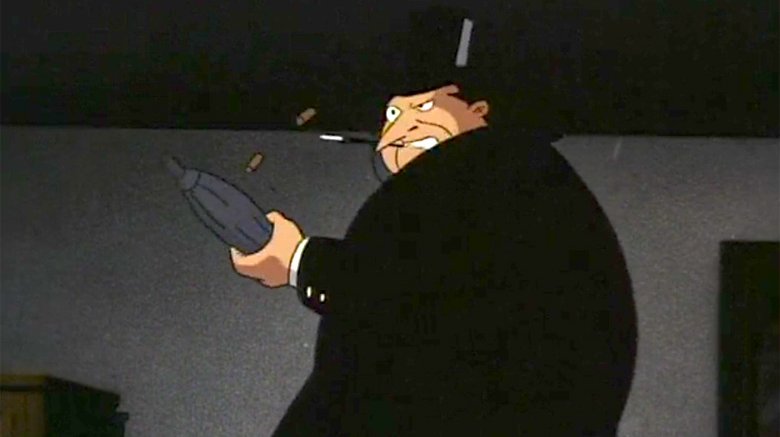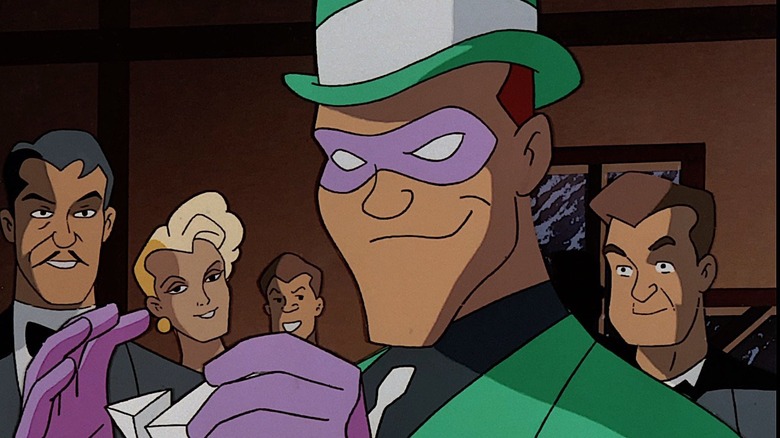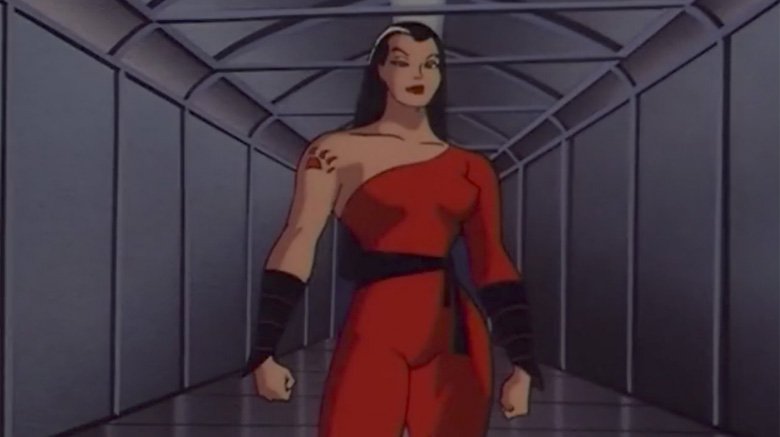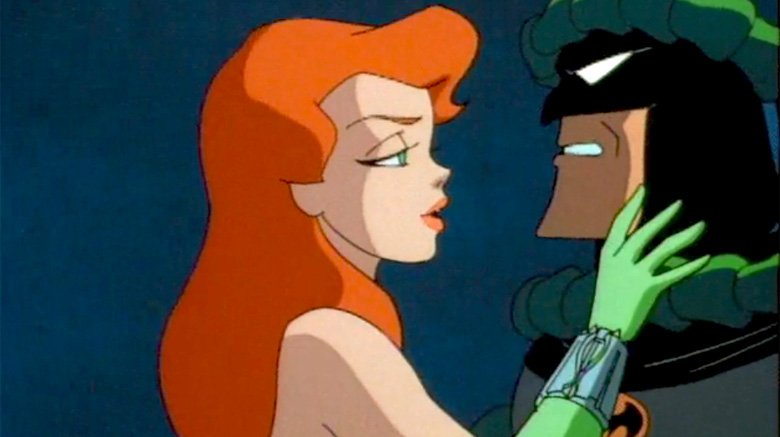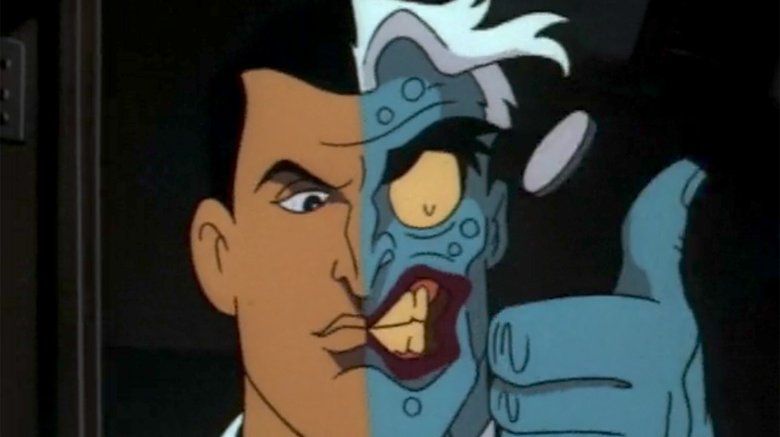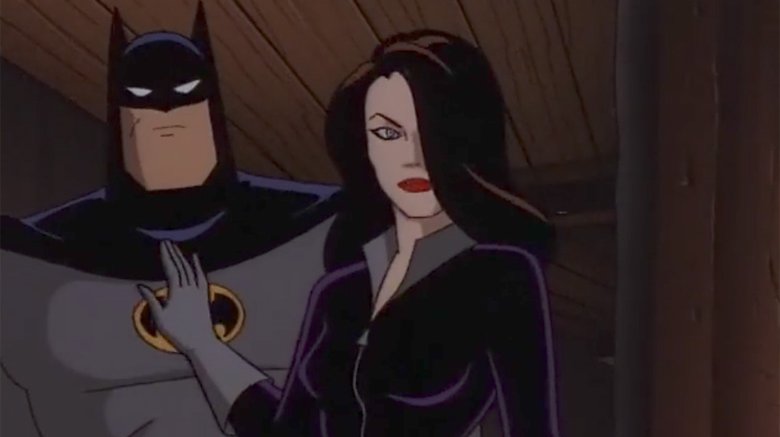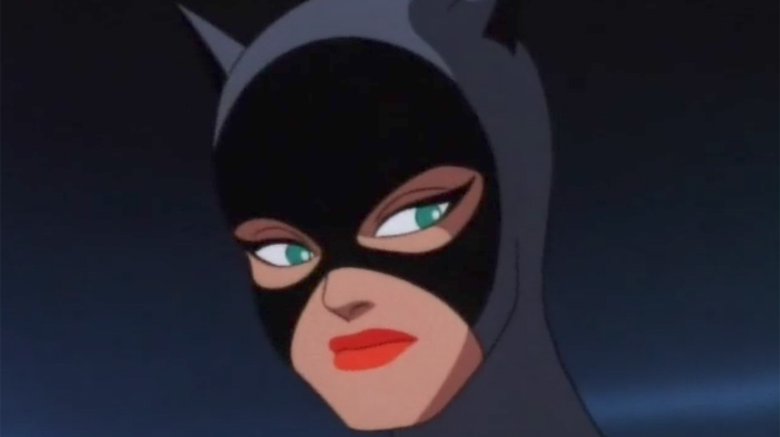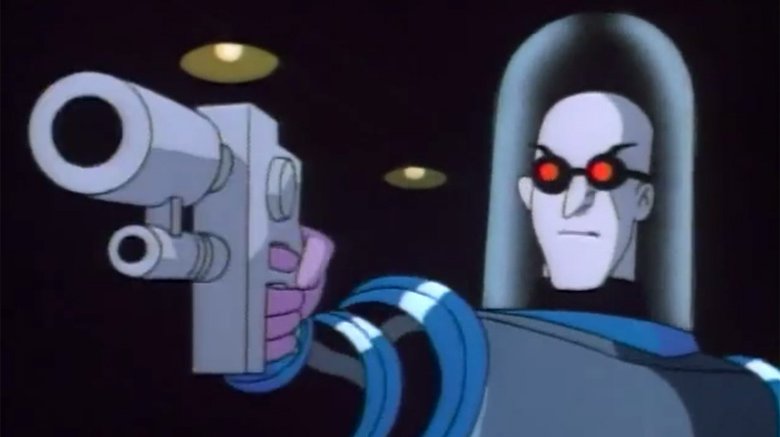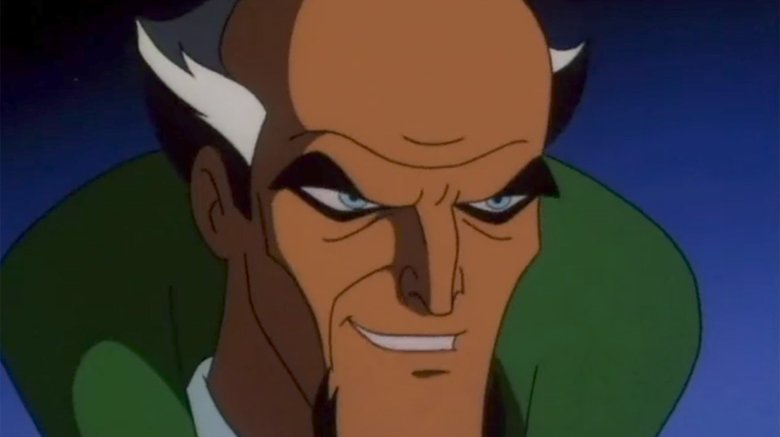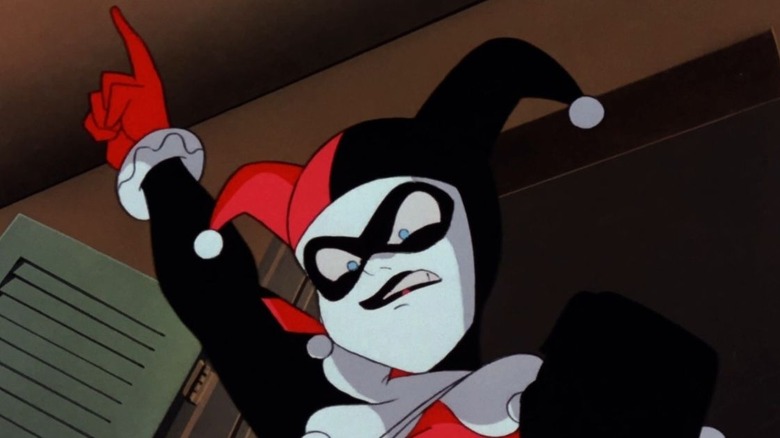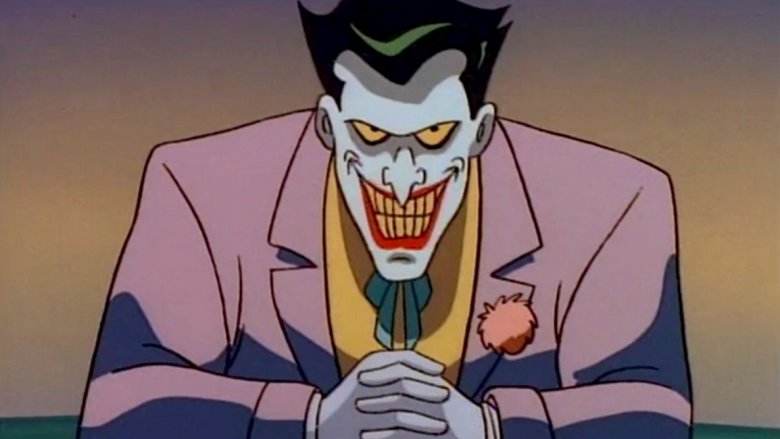Every Batman: The Animated Series Villain Ranked From Worst To Best
In 1992, Batman: The Animated Series hit television screens and changed the Dark Knight forever. With an art deco style heavy on shadows and a storytelling approach that stripped characters down to their essence, it wasn't just a success—it exerted an influence that's still being felt today.
But as good as it was for its heroes, the real attraction was the villains, and that's why we're sitting down with all 85 episodes of the original Batman: The Animated Series to rank all the bad guys—that's every single villain—from worst to best.
Dr. Emile Dorian
You may remember Dr. Emile Dorian as the mad scientist who briefly turned Catwoman into an actual cat woman in an effort to get her to mate with his pet tiger-man, Tygrus. Not only is that kind of a bad supervillain plot, but that whole setup means that he's the third most notable villain in his only appearance. Fourth if you count his gorilla-man pal.
The Drug Lord
"P.O.V." is one of the show's few truly bad episodes for a lot of reasons—it's a riff on Rashomon, but each character's story actually ends up lining up pretty well—but the worst might be its villain. If the story had involved one of the major Bat-villains, we could've at least seen the different ways characters see someone like the Joker. Instead, we just have a gangster so generic that his name is "The Drug Lord" and his only notable feature is that he wears an overcoat.
The Sewer King
Look, we're not saying we don't want Batman to punch out an abusive Dickensian crook who uses trained alligators to terrorize children into becoming pickpockets, but come on. That's the kind of thing that should happen in the opening—this guy manages to stick around for a full 22-minute episode, armed only with a stick, a ruffled collar, and half a pair of eyeglasses.
The Werewolf
Fun fact: The Werewolf made his debut in the episode after Batman fights a tiger-man and a gorilla with a hat on, and even for Batman, that's gotta be a pretty weird couple of days. Either way, "Moon of the Wolf" isn't bad and if there's one thing this show could've used more of, it's Batman taking on classic horror monsters—there's not a single Frankenstein in the entire series. When you get right down to it, though, Anthony Romulus is just a second-rate Man-Bat, and even a first-rate Man-Bat isn't that good.
Man-Bat
Kirk Langstrom has the dubious honor of being the lowest-ranked "major" Batman villain on this list, for the simple reason that Man-Bat is never really as good as you want him to be. It's worth noting, however, that he was chosen to be the very first villain of the series in "On Leather Wings," and the sequence of Man-Bat flying through Gotham City, dragging Batman with a rope, was a pretty amazing showcase for how well-animated the show would be. And also, it set the tone of Batman constantly fighting animal people in torn-up pants, which happened way more often than you remember.
Lloyd Ventrix
If the name "Lloyd Ventrix" doesn't sound familiar, there's a reason for that: he's another one of those one-and-done villains who only made a single appearance on the show. To be fair, though, "See No Evil" was a good one. The idea of a low-level crook getting a suit that made him invisible and then using it to stay in touch with his estranged daughter added a little bit of nuance to the character, and led to some really cool scenes, like Batman riding on top of an invisible getaway car. There's just not enough about Lloyd himself other than being "that invisible guy Batman fought."
Jimmy 'The Jazzman' Peake
One thing you might not remember until you start going through every episode of BTAS is how many of them were just about Batman having to deal with regular mobsters in Gotham City. Jimmy the Jazzman is one of those, and while he does shoot put Commissioner Gordon in the hospital, he does not live up to his name by performing any sweet saxophone solos. Don't give us a Jazzman if you're not gonna give us the jazz, man.
Montague Kane
Getting this high on our list of BTAS villains might be the best trick that evil magician Montague Kane ever pulled off. He is, after all, one of those villains who winds up being completely overshadowed by something else that happens in his one and only appearance, which in his case was the episode's guest star, Zatanna. Still, we like him, if only because he's exactly the kind of character who would be played by Tim Curry in a live-action version.
Roland Daggett
As far as Batman's non-supervillain foes go, Roland Daggett is a good one. He's arguably one of the major antagonists of the show's first season, having a hand in creating Clayface, Batgirl's origin story, and serving as the villain of an episode based on the classic comic book story "There Is No Hope In Crime Alley." He's a great character in terms of being able to slide into any story as the man pulling the strings, but he's always going to be overshadowed by Gotham's more colorful arch-villains. Do we really need Roland Daggett and Rupert Thorne?
Tony Zucco
"Robin's Reckoning" is unquestionably one of the show's best episodes—with the Emmy Award to prove it—but as a character, Boss Zucco is really just a means to an end. As the guy behind the murder of Robin's parents, he's never the focus of the story in the way that Robin is himself, and in the larger Batman mythos, he's never going to be as important as Joe Chill.
Nivens
Most sources list the "official" villain of "A Bullet For Bullock" as Vinnie the Shark, yet another in a long line of Gotham City Gangsters. That makes sense, as he's the one Batman and Harvey Bullock spend most of the episode chasing down. The twist, though, is that the real "bad guy" behind the death threats Bullock's been getting is Nivens, his long-suffering landlord, who just wants to get someone who isn't a loud, cigar-chomping oaf to live across the hall. As weird as it is to build a kids' show around a plot involving rent control, it's a pretty great twist.
Professor Milo
In the comics, Professor Achilles Milo dates back to 1957 and a story by Batman's co-creator, Bill Finger, and Sheldon Moldoff, the artist who drew many of the most notable early Batman adventures. With that kind of pedigree, it makes sense that BTAS would use him as a go-to villain for their weirder mad scientist plots, but in practice, well, he and his bowl cut wound up being about as notable on the show as they were on the page. When your most effective plot involves poisoning stray cats, you're never going to get on the Riddler's level.
Boss Biggis
Some people don't like "The Forgotten," the Cool Hand Luke-style episode where Batman goes undercover as a homeless person, gets amnesia, and winds up in a labor camp. Those people are wrong, because that episode actually rules, even if Boss Biggis leaves something to be desired in villainy. Seriously, a large guy named "Biggis" who's constantly eating greasy chicken? That's a little on the nose, even for a series about a man dressed as a bat named Batman.
Nostromos
At heart, Nostromos is essentially a Scooby Doo villain: a charlatan who fakes having mystical powers with the help of wires, magnets, and other assorted trickery, all in the name of bilking rich folks out of their money. That honestly seems like the kind of thing you wouldn't really need Batman to deal with, but to be fair, Nostromos does it with style. He's the kind of guy who keeps a full-scale planetarium in his evil cult headquarters just in case he needs it for a climactic set piece, and that has to count for something.
Lock-Up
One of BTAS's trademarks was that the super-villains always have interesting motivations, something to set them apart and make them unique even in a crowd of colorful characters. For Lyle Bolton, it was the idea that he and Batman were actually on the same side. They were both tired of criminals escaping from Arkham Asylum to terrorize the city. Unfortunately for Lock-Up, they had a pretty big difference of opinion on how to solve that problem, with Lock-Up somehow landing on "put Commissioner Gordon and a TV News reporter into cells on an old prison ship and drown them in the ocean." He only appears once, but once you've tried that, what's left to do?
Clayface
Clayface's appearances on BTAS have almost everything you want from a Batman villain: a tragic origin story that makes them sympathetic even as they cross the line putting them at odds with the Dark Knight, a very cool set of powers, and great visuals that encompass everything from gross-out muck monster aesthetics to cool shape-shifting. That said, he's just not as good as everyone else, and has to wind up in the middle of the pack just by default—largely because he wouldn't get his best episodes until the show was rebranded with new designs as The New Batman Adventures.
Rupert Thorne
Earlier, we mentioned that we don't need Roland Daggett and Rupert Thorne—and if we have to choose, Thorne gets it every time. John Vernon's smarmy growl was the perfect voice for Gotham's kingpin, and his function as a criminal that even Batman has trouble taking down for good made him a great foil, especially when he took on Harvey Dent and wound up inadvertently creating Two-Face. It's worth noting that on the show, Thorne is never actually brought down and sent to jail, although that does happen in the truly great tie-in comic, The Batman Adventures.
Baby Doll
There's no shortage of sympathetic villains on BTAS, but Mary Dahl might be one of the strangest: an actress with a condition that left her looking five years old for her entire life, and who attempted to retreat to the past by kidnapping her old co-stars and turning her show's sets into an elaborate deathtrap for Batman. It's an odd premise, but Baby Doll's reaction to the funhouse mirrors that make her look older, and the way she interacts with Batman at the end of the show, are surprisingly moving, and very well done.
Killer Croc
One time, he threw a rock at Batman.
It was a big rock.
Clock King
The Animated Series version of the Clock King is one of the best possible takes on a classic gimmick villain. Rather than just being a clock-obsessed crook who steals timepieces, the BTAS Clock King is a man so obsessed with punctuality that he devotes his entire life to getting revenge against someone who made him late. Those are the kind of extremes that you need to go to if you're going to make it in Gotham City, although it doesn't hurt to start out having a wonderfully groan-worthy pun name like "Temple Fugate."
Count Vertigo
Count Werner Vertigo has all the makings of a great gimmick villain. He's got a cool name, a cool costume, and a power that allows him to go toe-to-toe with a guy who routinely punches out a crocodile-man. He even has a solid pedigree from the comics as one of the villains who was nicely fleshed out over the years and given an intense backstory. However, the idea of a supervillain with a death wish whose country was destroyed by the literal Wrath of God probably wouldn't have made it onto a kids' show. Unfortunately, he never rises to be a major player, largely because he's overshadowed by being featured as the villain in the episode that also introduces the far more interesting Talia.
Hugo Strange
In the comics, Hugo Strange is a mad scientist whose schemes run the gamut from creating giant, misshapen "Monster Men" to becoming so obsessed with Batman that he tries to replace him. On the show, his only appearance, in "The Strange Secret of Bruce Wayne," his plan is very different: blackmailing Gotham's rich and famous by making VHS tapes of their dreams. It sounds goofy, but it leads to an incredibly solid episode, and Ray Buktenica plays him as such an unrepentant creep that it's delightful to watch Batman ruthlessly crush him at the end.
The Mad Bomber
A lot of the major Batman villains, like Joker and Two-Face, succeed because they work as reflections of Batman himself. He doesn't get a lot of press for it, but the Mad Bomber—the villain of "Beware the Grey Ghost," who bears a suspicious resemblance to animator Bruce Timm—does too. In the same episode when we find out Batman is obsessed with his childhood hero and has a whole room full of toys and memorabilia he's collected, the villain turns out to be another obsessive fan.
The only difference is that while Batman is striving to emulate the hero, the Mad Bomber patterns himself after the villain. Not only is that a cool idea in its own right, it's also a "dark reflection" that the kids watching the show could relate to.
Josiah Wormwood
If it wasn't for "Almost Got 'Im," "The Cape & Cowl Conspiracy," based on a story by Elliot S. Maggin and Walt Simonson from Detective Comics #450, would have the best third-act plot twist of the entire series. As it stands, Josiah Wormwood is still one of the show's best one-shot villains, a sneering master of deathtraps hired to steal Batman's cape and cowl, who actually gets one over on the Dark Knight—or seems to, at least.
The Terrible Trio
The Terrible Trio are what happens when a bunch of bored, super-rich frat boys decide to commit crimes in Gotham City, and look: sympathetic villains are great and all, but sometimes you just want to see Batman punch the living hell out of some people who oughta get punched.
H.A.R.D.A.C.
The idea of a supercomputer that coldly decides that the best way to eliminate death from the human condition is to eliminate actual mortal humans is a good one, and for a hero like Batman, who relies on his gadgets and vehicles, turning the technology of the Batcave against him makes for a great set piece. Where the Holographic Analytical Reciprocating DigitAl Computer really shines, though, is in "His Silicon Soul."
In that episode, the viewers follow Batman on an adventure, only slowly learning that we're actually seeing a robotic replicant that truly believes it's the real thing. Once it finally accepts what it is, the moment when "Batman" pulls off his own skin to reveal the metal skull below is one of the show's most genuinely frightening moments.
Maxie Zeus
Maxie Zeus has the benefit of starring in one of the show's most visually impressive episodes. The BTAS art style was, after all, heavily influenced by the Max Fleischer Superman cartoons of the 1940s, and "Fire From Olympus" recreates set pieces drawn from the first one, "The Mad Scientist," for Maxie's awesome lightning cannon. So yeah, Maxie Zeus might not be a great villain, but he was the perfect foil for this story.
Bane
Considering that he was the villain of one of the biggest Batman stories of all time, you'd expect Bane to be a bigger deal when he showed up on The Animated Series. The problem is that "Bane" aired only a month after the Knightfall storyline had been completed in the comics, which means the producers of the television show were likely working on their version of the story without the benefit of having all the information.
So while the animated Bane isn't bad, he's not great, either. Rather than the mastermind he is in the comics, he's reduced to an assassin with unstoppable physical strength. It makes for a good fight, but it doesn't quite do him justice.
The Mad Hatter
The Mad Hatter is pitiful, in a very real sense. There's a sadness to him, something that goes beyond the sympathy you see with someone like Mr. Freeze, that's directly translated into a person who keeps making the wrong choices because he wants to turn the world into his own private fantasy regardless of what it does to the people around him. When he falls in love with someone, he tries to control her mind, and when Batman gets in his way, he traps him in a dream world. He just doesn't realize how malicious he truly is.
Incidentally, the Mad Hatter was voiced by Roddy McDowall, making him the only actor to play a villain on both Batman: The Animated Series and the Adam West Batman TV series, where he appeared as Bookworm.
The Scarecrow
The Scarecrow isn't just the villain of some great episodes—including the one that gave the world Kevin Conroy snarling "I am vengeance! I am the night!"—he also has one of the show's best designs. The spindly limbs and the way he dances across the screen while he's gleefully terrorizing Gotham City make him one of the most sinister villains, and he comes off as one of the smartest, too. Every time he shows up, he uses the concept of fear a little differently—from causing it, to taking it away, to trapping Batman himself in Arkham Asylum.
Kyodai Ken
Plenty of villains hate Batman, but very few of them come at him because they hate Bruce Wayne. Kyodai Ken, on the other hand, has a seething hatred for "the rich man's son," and he's willing to have a fistfight in an active volcano to settle the score. It's what makes him so unique in his approach, and it allows him to tie into a part of Batman's past that we rarely see on the show, in a way that leads to some really great action.
The Ventriloquist
The most amazing thing about the Ventriloquist is that he and Scarface, his murderous dummy, actually have the same voice actor, George Dzundza. That probably shouldn't be that surprising, considering that it's, you know, how ventriloquist dummies (and voice actors) work, but the contrast between Arnold Wesker's meek, quiet squeaking and Scarface's enraged shouting works perfectly for the character.
The Penguin
If you ever doubt that Andrea Romano was truly incredible at her job as the casting director for DC's animated projects, consider this: when it came time to cast the Penguin, she got Paul Williams, the Grammy and Academy Award-winning songwriter who wrote "The Rainbow Connection" for the Muppets and "Fill Your Heart" for David Bowie. That's not the choice anyone would expect, but it turned out to be an incredible bit of casting.
BTAS's Penguin was a criminal with delusions of high society respectability, and Williams played that to the hilt, especially in episodes like "Birds of a Feather."
The Riddler
It's hard to say what the best BTAS redesign is—especially with Mike Mignola's Mr. Freeze out there—but taking the Riddler down to a green jacket, a purple domino mask, and a smirk is one of the best ways they could've approached the character. He's stripped down to the pure idea of a man who just wants everyone to know how smart he is, and who realizes that the best way to do that is to beat the World's Greatest Detective at his own game. With John Glover turning in a performance that's somehow even more smarmy than his Lionel Luthor on Smallville, the Animated Series Riddler is unquestionably the best version of the character ever.
Red Claw
Red Claw might be the single most underrated villain of the whole show. In her first appearance, she's described as the most ruthless terrorist in the world, and when she returns, she's trying to get her hands on an atomic weapon in a plot that ties into Alfred's past as a secret agent. She's got a great look, and stands as one of the show's only female villains defined by cold murderousness and physical strength—she knocks Robin out with a single hit in her second appearance—without a single trace of romance tying her to another character. With all that going for her, it's shocking that she never found her way into the comics. Maybe she's just... too awesome?
Poison Ivy
After a solid decade of kids' cartoons with well-meaning but ham-fisted environmental morals, Poison Ivy's commitment to defending plants by murdering humans was a pretty welcome twist on the established formula. Plus, her pin-up girl design and almost bored attitude towards killing made her the perfect final ingredient in making Harley Quinn a star. She's that rare villain who makes the entire show better.
Two-Face
It's easy for Harvey Dent to fall into the role of a two-note character, since so many stories about him either want to re-tell his origin or do a story where he's "fixed," only to become Two-Face again by the end. BTAS, however, did something really cool, introducing Harvey Dent as Bruce Wayne's crime-busting friend long before he actually gets his villainous origin. He was even a victim for Poison Ivy in her first appearance, a nice little bit of continuity that came around again in the great "Almost Got 'Im."
Talia
Considering that she's on Batman's side as often as she's pit against him, it's tricky to call Talia a "villain" in the traditional sense. Either way, she brings the same kind of romance and adventure to the show that she does in the comics, with a femme fatale design that makes Batman feel like James Bond.
Catwoman
Selina Kyle is easily one of the most important characters in the entire Batman mythos, and from the moment she steps onscreen, the Animated Series version shows exactly why. From the start, she's played as a Robin Hood that stands apart from the other killers Batman is up against, and the romantic connection between her and Batman is depicted better in that first episode than in any of her other major movie appearances. Plus, that costume is one of the all-time greats.
Mr. Freeze
Very few villains benefitted from The Animated Series as much as Mr. Freeze. Thanks to a darker take on his origin and a redesigned look from Hellboy creator Mike Mignola, Mr. Freeze was revitalized from a forgotten B-lister of the Silver Age to a major villain whose tragic origin got the show an Emmy Award for Outstanding Writing in an Animated Program. While almost every other bad guy is driven to be as over the top as possible, Freeze's cold demeanor and heartbreaking backstory make him one of the show's best characters—hero or villain.
Ra's al-Ghul
With David Warner's raspy, commanding voice and adventures that took the Dark Knight out of Gotham City and into pulpy, world-traveling adventure, Ra's al-Ghul was the source of some of the show's most exciting stories. As the Demon's Head, he has a twisted desire to make the world a better place by killing most of its population, and makes his entrance by just straight up walking into the Batcave with the weariness of an immortal who's seen it all... but had still never come up against someone like Batman. Plus, he paired a full business suit with a high-collar cape, which we can all agree is a pretty bold move.
Harley Quinn
As great as Batman: The Animated Series was for kicking off the DC Animated Universe and raising the standard of kids' TV in a way that's still influencing cartoons today, it's pretty easy to argue that the show's greatest achievement was the creation of Harley Quinn. Originally intended as a one-off character in "Joker's Favor," one of the show's best episodes, Harley quickly became a cult favorite thanks to a beautiful color-blocked design and Arleen Sorkin's distinctly over-the-top voice, and took the spotlight herself.
The result was a character whose villainous exploits were tempered with a tragic love story that made her incredibly easy to sympathize with, and episodes like "Harley's Holiday" and "Harley and Ivy" that cemented her as a fan favorite. Twenty-five years later, she's a major player in every version of the DC Universe, and it all started here.
The Joker
There wasn't any doubt about who would be #1, right? The Joker of Batman: The Animated Series is, like Batman, a great character boiled down to his purest, most menacing form. In episodes like "Joker's Favor" and "The Laughing Fish," he's shown to be one of the most terrifying characters on the show, with unpredictable schemes that force Batman into playing a different sort of game than the mysteries provided by most villains. The thing is, though, he never stops being genuinely funny, either, with Mark Hamill's manic laughter and sinister growl making for the perfect delivery.
